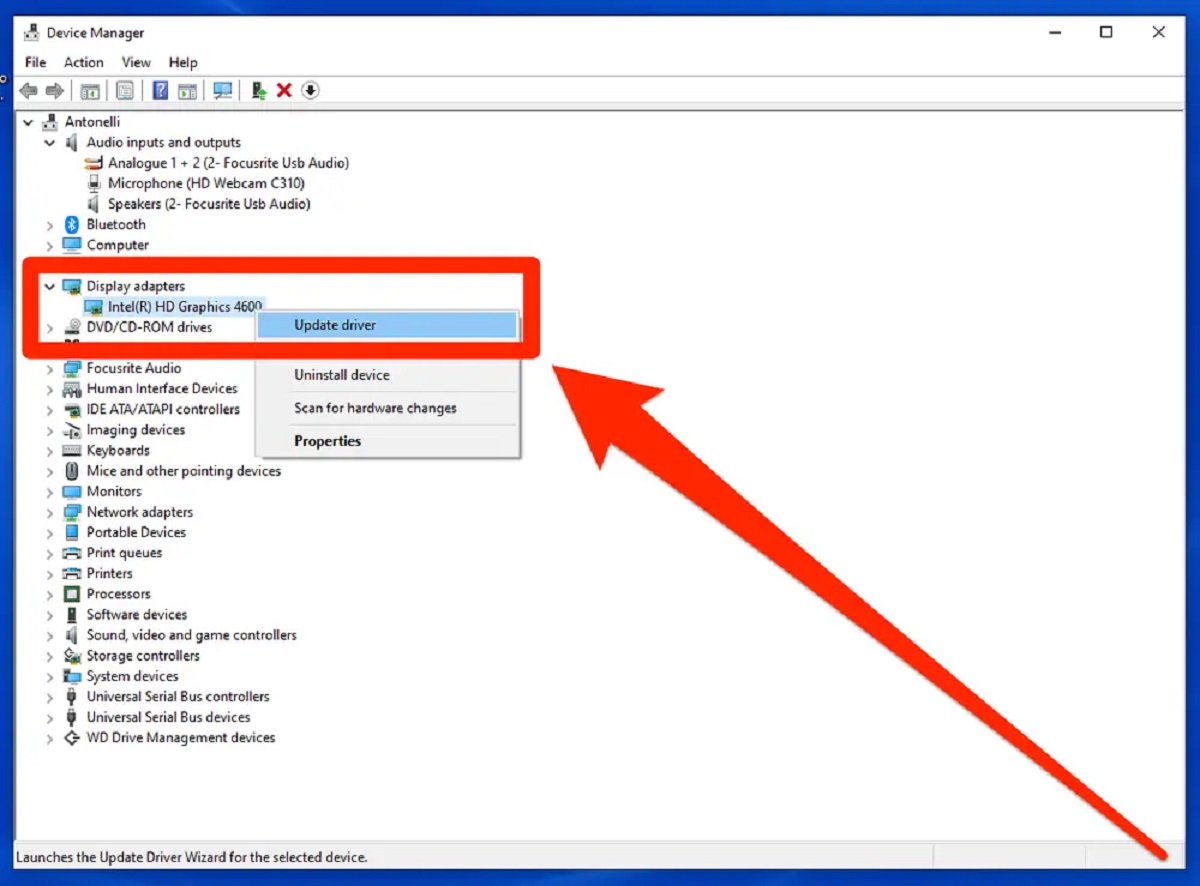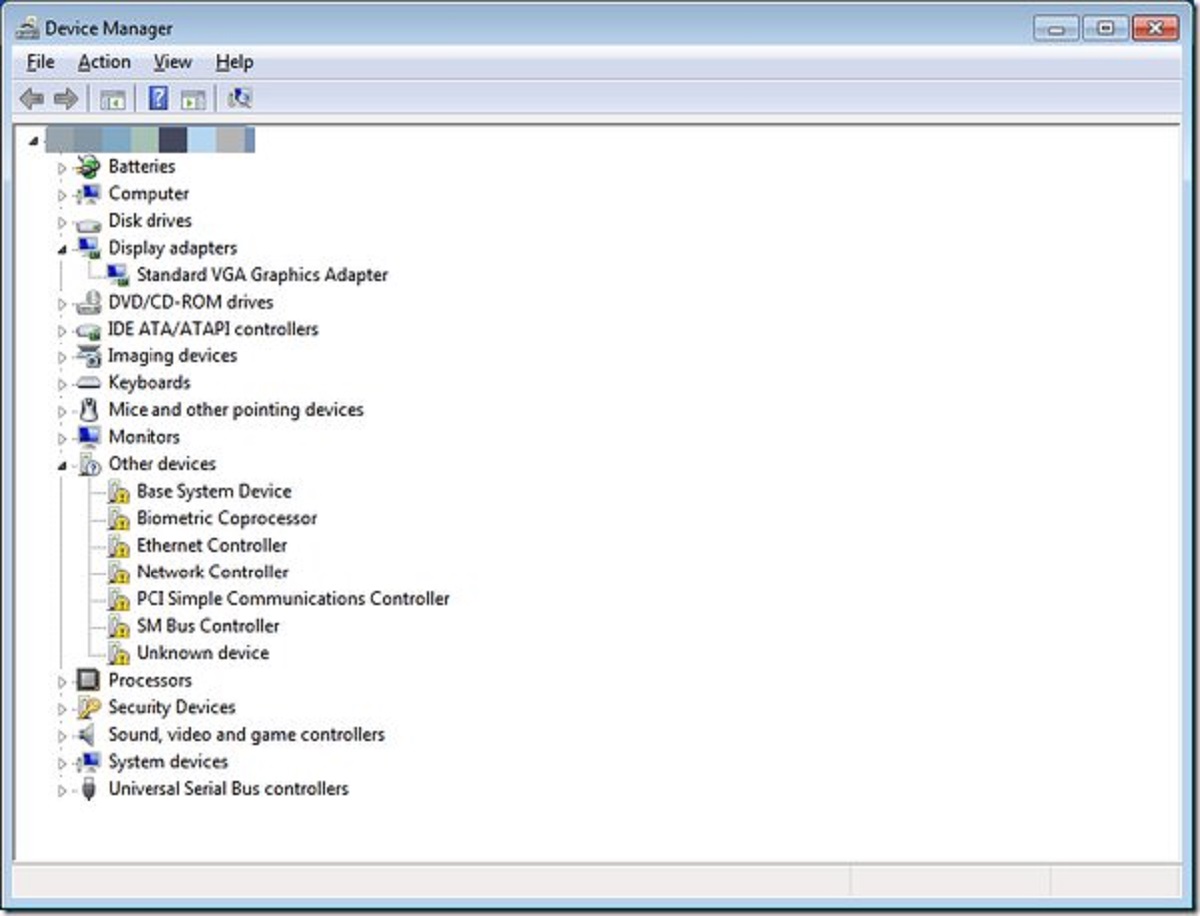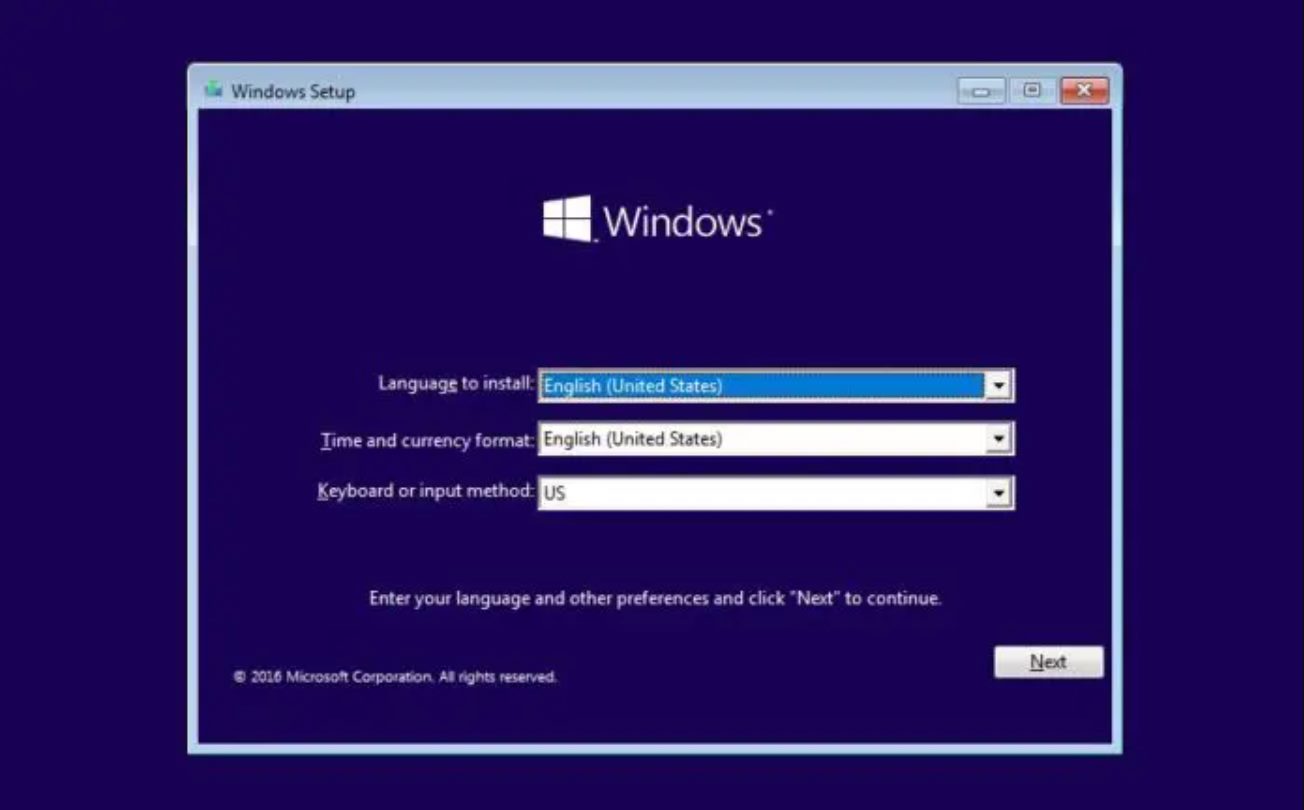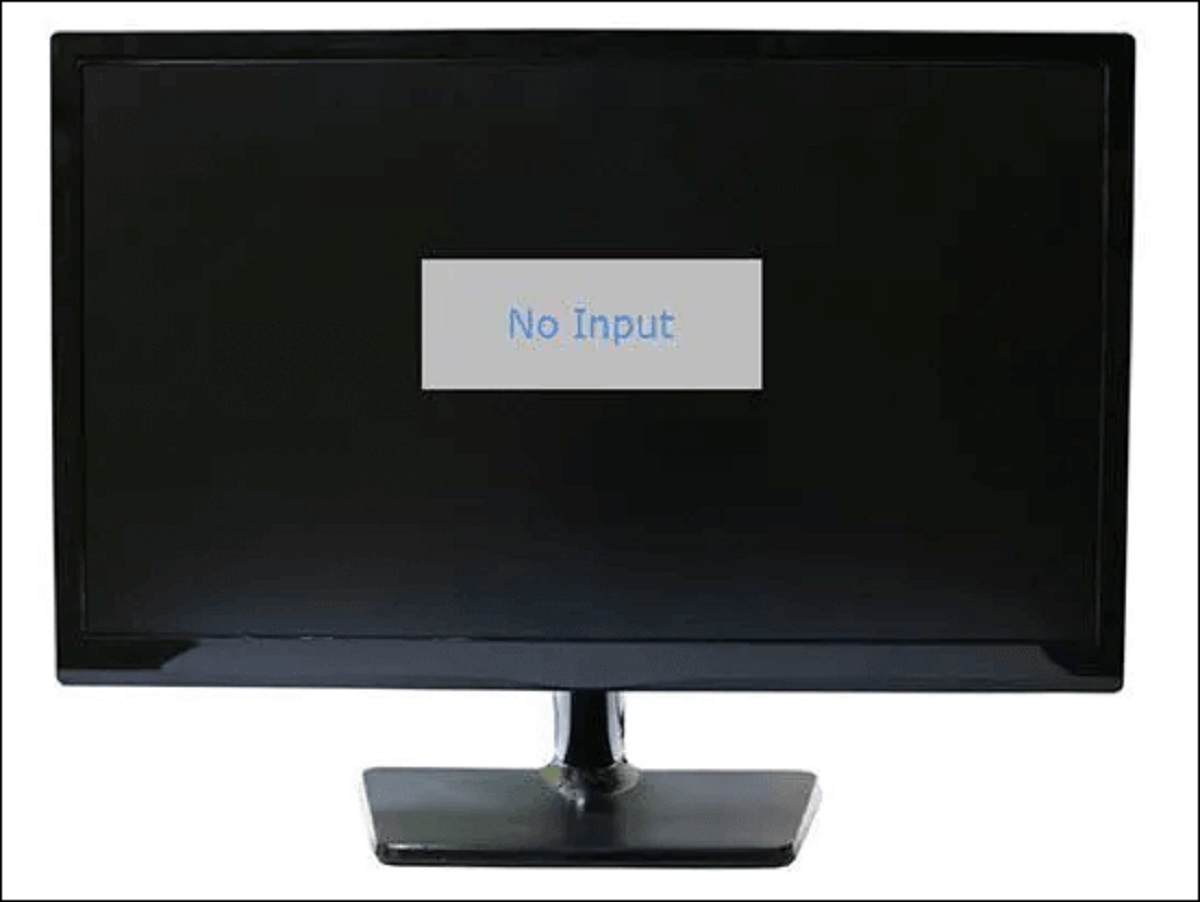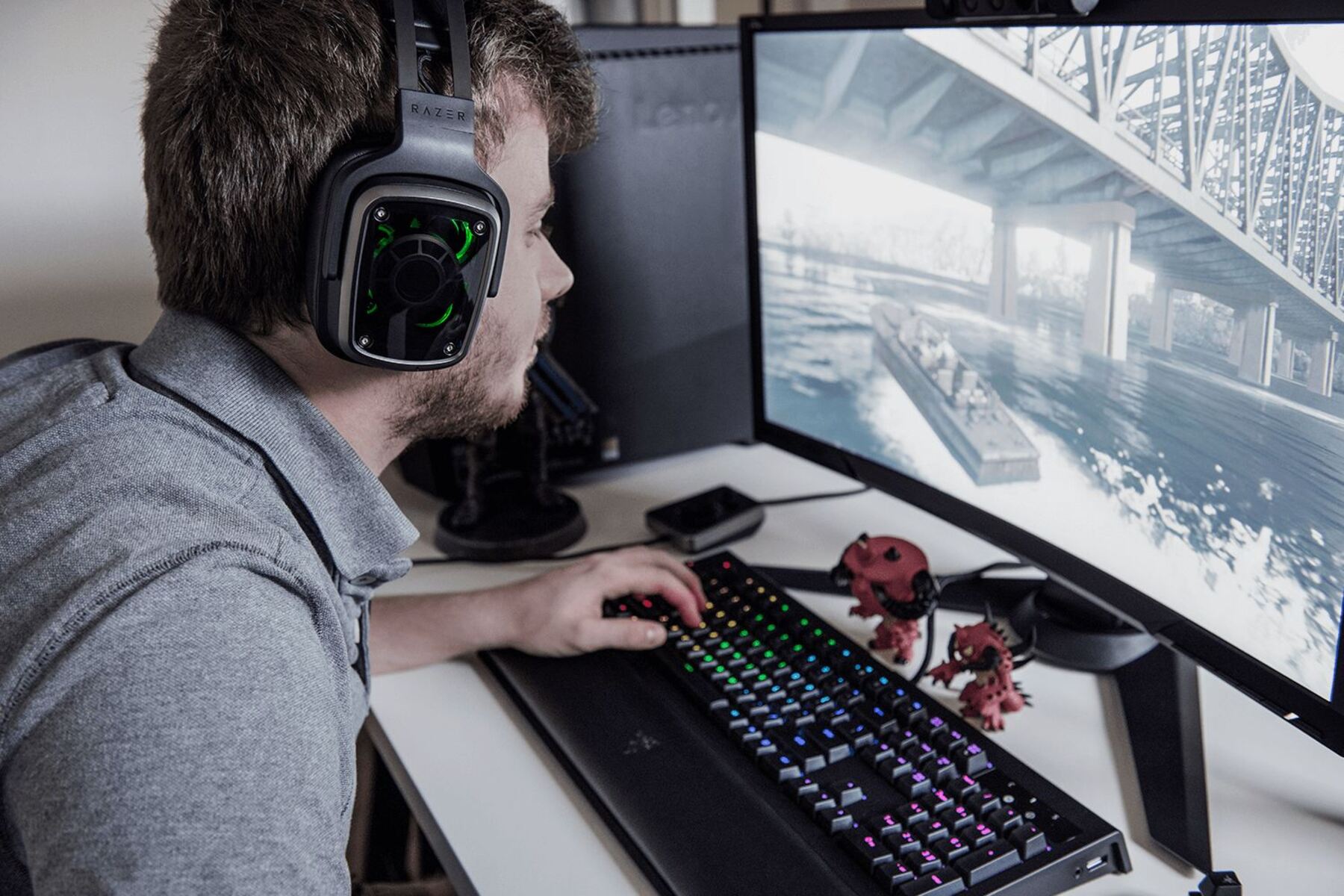Introduction
Keeping your PC drivers up to date is important for ensuring optimal performance and stability. Drivers are software that allows your computer’s operating system to communicate with and control hardware devices such as printers, graphic cards, and sound cards. Just like any other software, drivers can have bugs, compatibility issues, or performance limitations. Therefore, it is crucial to regularly update them to ensure that your computer operates smoothly and efficiently.
Updating your PC drivers can bring numerous benefits. It can enhance the overall performance of your system, as updated drivers often come with performance improvements and bug fixes. In addition, updated drivers can resolve compatibility issues with the latest software and hardware releases, ensuring that your computer can take full advantage of new features and functionalities.
Many driver updates also focus on security enhancements. Outdated drivers can sometimes have vulnerabilities that can be exploited by hackers or malicious software, putting your computer and personal data at risk. By updating your drivers, you can ensure that your system is equipped with the latest security patches, offering a layer of protection against potential cyber threats.
In this article, we will explore two methods for updating your PC drivers: manual and automatic updating. The manual method involves visiting the manufacturer’s website, downloading the latest drivers, and installing them on your computer. On the other hand, automatic updating can be done through the Windows Device Manager or by using third-party driver update software. We will discuss both options in detail, providing step-by-step instructions to help you keep your drivers up to date effectively.
Whether you are a casual user or a tech enthusiast, updating your PC drivers is an essential task that should not be overlooked. By doing so, you ensure that your computer performs at its best, remains secure, and is compatible with the latest software and hardware releases. So let’s dive into the methods of updating your PC drivers to keep your system running smoothly and efficiently.
Why should you update your PC drivers?
Updating your PC drivers is crucial for several reasons. Let’s explore why keeping your drivers up to date is important:
- Performance optimization: Updated drivers often come with performance improvements and bug fixes. By updating your drivers, you can ensure that your hardware devices function at their best, providing you with a smooth and seamless computing experience.
- Compatibility: The software and hardware landscape is constantly evolving, with new releases and updates being introduced regularly. Outdated drivers may not be compatible with the latest software or hardware, leading to various issues, such as crashes, errors, or hardware malfunctions. By updating your drivers, you ensure that your computer remains compatible with the latest technologies.
- Security: Outdated drivers can potentially have security vulnerabilities that can be exploited by hackers or malicious software. By regularly updating your drivers, you can protect your computer and personal data from potential security risks.
- Stability: Drivers play a crucial role in the stability of your system. Outdated or malfunctioning drivers can cause stability issues, such as system crashes, freezes, or BSOD (Blue Screen of Death) errors. Updating your drivers helps to ensure the stability of your computer, reducing the chances of encountering such problems.
- New features and enhancements: Driver updates often come with new features and enhancements that can improve the functionality and usability of your hardware devices. By updating your drivers, you can take advantage of these new features, allowing you to make the most out of your hardware investments.
Regularly updating your PC drivers is essential for maintaining the performance, compatibility, stability, and security of your computer. It not only enables your hardware devices to function at their best but also ensures that your system remains protected against potential vulnerabilities. In the following sections, we will discuss how to manually and automatically update your PC drivers, providing you with step-by-step instructions to help you keep your drivers up to date effortlessly.
How to manually update your PC drivers
Manually updating your PC drivers involves visiting the manufacturer’s website, downloading the latest drivers, and installing them on your computer. While this method requires a bit more effort compared to automatic updating, it gives you more control over the process. Here’s a step-by-step guide to manually update your PC drivers:
- Step 1: Identify the drivers that need updating: Before you start updating your drivers, it’s important to identify which drivers require updates. You can do this by checking the Device Manager on your computer. Launch the Device Manager by right-clicking the Start Menu and selecting “Device Manager.” Look for any devices with a yellow triangle or exclamation mark icon, as these indicate outdated or malfunctioning drivers.
- Step 2: Visit the manufacturer’s website: Once you’ve identified the drivers that need updating, visit the manufacturer’s website of each specific device. Most manufacturers have a support or downloads section on their website where you can find the latest drivers for their devices.
- Step 3: Download the latest drivers: On the manufacturer’s website, locate the driver download section for the specific device. Look for the latest driver version that is compatible with your operating system. Download the driver to your computer.
- Step 4: Install the drivers: After downloading the drivers, navigate to the location where they are saved on your computer and double-click on the driver file. This will initiate the installation process. Follow the on-screen instructions to install the drivers on your computer. It may be necessary to restart your computer for the changes to take effect.
- Step 5: Restart your computer: Once the drivers are successfully installed, restart your computer to ensure that the changes are applied correctly. After the restart, your hardware devices should be updated with the latest drivers.
By following these steps, you can manually update your PC drivers and ensure that your hardware devices are equipped with the latest drivers available. However, keep in mind that manually updating drivers can be time-consuming, especially if you have multiple devices that require updates. An alternative option is to use automatic driver update methods, saving you time and effort. We will explore these methods in the next section.
Step 1: Identify the drivers that need updating
The first step in manually updating your PC drivers is to identify the drivers that require updates. Outdated or malfunctioning drivers can cause various issues, such as hardware malfunctions, system crashes, or compatibility problems with the latest software updates. Here’s how you can identify the drivers that need updating:
- Device Manager: Launch the Device Manager on your computer by right-clicking the Start Menu and selecting “Device Manager” from the context menu. In the Device Manager window, you will see a list of all the hardware devices installed on your computer. Look for any devices with a yellow triangle or exclamation mark icon. These indicate that the drivers for those devices need updating or are experiencing issues.
- Driver update software: There are also dedicated driver update software available that can automatically scan your computer and detect outdated or malfunctioning drivers. These programs can provide you with detailed information about the drivers that need updating and facilitate the updating process. Keep in mind that it’s important to choose a reputable and trustworthy driver update software to ensure the safety and reliability of your system.
- Manufacturer’s website: Alternatively, you can manually check the manufacturer’s website of each hardware device to see if there are any updated drivers available. Most manufacturers have a support or downloads section on their website where you can search for and download the latest drivers. Simply locate the specific device model and look for any driver updates listed.
It’s essential to regularly check for driver updates, even if you are not currently experiencing any issues with your hardware devices. Driver updates often include bug fixes, performance improvements, and compatibility enhancements, ensuring that your devices function optimally with the latest software releases and updates. By identifying and updating the drivers that require attention, you can maintain the stability, performance, and compatibility of your computer system.
Once you have identified the drivers that need updating, you can proceed to the next steps to manually download and install the latest drivers from the manufacturer’s website. Alternatively, you can explore the option of automatic driver update methods, which can simplify and streamline the updating process. We will discuss these methods in the upcoming sections, providing you with an overview and step-by-step instructions to help you keep your drivers up to date efficiently.
Step 2: Visit the manufacturer’s website
After identifying the drivers that need updating, the next step in manually updating your PC drivers is to visit the manufacturer’s website. Each hardware device has a dedicated manufacturer who provides support and updates for their products. By visiting the manufacturer’s website, you can access the latest drivers for your specific devices. Here’s how you can visit the manufacturer’s website to download the latest drivers:
- Identify the manufacturer: Take note of the manufacturer of the hardware device for which you need the updated driver. This information can usually be found in the Device Manager.
- Open a web browser: Launch your preferred web browser, such as Google Chrome, Mozilla Firefox, or Microsoft Edge.
- Search for the manufacturer’s website: Use a search engine like Google or Bing to search for the manufacturer’s website. In the search bar, type the name of the manufacturer followed by the keyword “official website” or “support.”
- Access the manufacturer’s support page: Look for the official website link in the search results and click on it. Once on the manufacturer’s website, navigate to the support or downloads section.
- Find the drivers: In the support or downloads section, locate the area related to drivers or software. Depending on the website layout, you may need to search for your specific device model or navigate through a list of available drivers for different products. Take your time to find the correct drivers for your device.
- Select the operating system: Most manufacturer websites provide drivers for different operating systems. Select the relevant operating system for your computer, such as Windows 10, macOS, or Linux.
- Download the drivers: Once you have found the correct drivers for your device and operating system, click on the download button or link. The drivers will typically be saved as executable files (*.exe) or zip archives (*.zip).
Visiting the manufacturer’s website is essential to ensure that you download the official and most up-to-date drivers for your hardware devices. It is recommended to avoid third-party websites or download sources, as they might not provide the genuine drivers or could include bundled software that you do not need or want.
In the next step, we will discuss how to download and install the latest drivers onto your computer. Following the manufacturer’s instructions and guidelines will help you successfully update your PC drivers and ensure optimal performance and compatibility.
Step 3: Download the latest drivers
Once you have visited the manufacturer’s website and identified the correct drivers for your hardware device, the next step in manually updating your PC drivers is to download the latest drivers. Downloading the appropriate drivers ensures that you have the most up-to-date and compatible software for your devices. Here’s how you can download the latest drivers onto your computer:
- Locate the driver download page: On the manufacturer’s website, navigate to the driver download section for your specific device. This section may be labeled as “Drivers,” “Support,” or “Downloads.” Look for the page that corresponds to your device model and operating system.
- Select the correct driver: On the driver download page, you will typically find a list of available drivers for different versions of the operating system. Select the driver version that matches your operating system and device model. Make sure to double-check before proceeding with the download.
- Download the driver: Once you have selected the correct driver, click on the download button or link provided. The driver file will usually be saved in an executable format (*.exe) or a compressed zip archive (*.zip).
- Choose a download location: When prompted, choose a location on your computer where you want to save the driver file. It is recommended to save it in a location that you can easily remember and access later.
- Wait for the download to complete: Depending on the size of the driver file and your internet speed, the download may take a few moments to complete. Be patient and avoid interrupting the download process.
Downloading the latest drivers from the manufacturer’s website ensures that you have the most reliable and compatible software for your hardware devices. It is important to be cautious and only download drivers from reputable sources to avoid potential issues or malware infections.
In the next step, we will discuss how to install the downloaded drivers onto your computer, ensuring that your hardware devices are updated and functioning optimally.
Step 4: Install the drivers
Now that you have downloaded the latest drivers for your hardware device, the next step in manually updating your PC drivers is to install them on your computer. By installing the drivers, you ensure that your hardware devices are equipped with the most up-to-date and compatible software. Here’s how you can install the downloaded drivers:
- Locate the downloaded driver file: Open the folder or location on your computer where you saved the driver file during the download process. The downloaded file will typically have an executable format (*.exe) or be a compressed zip archive (*.zip).
- Extract the driver files (if applicable): If you downloaded a zip archive, right-click on the file and select “Extract All” or a similar option. Choose a location to extract the files to and click “Extract.” This step may not be necessary if you downloaded an executable file.
- Run the driver installer: Double-click on the extracted driver file or the downloaded executable file (*.exe). This action will launch the driver installer.
- Follow the on-screen instructions: The driver installer will guide you through the installation process. Read any prompts or instructions carefully and select the appropriate options as required. The installation process may include accepting license agreements, choosing installation locations, or customizing installation settings.
- Wait for the installation to complete: Once you have followed the necessary steps and selected your preferred options, the driver installation process will commence. Depending on the complexity of the driver and your computer’s speed, the installation may take a few moments to complete. Avoid interrupting the installation process.
- Restart your computer (if necessary): After the driver installation is complete, you may be prompted to restart your computer. It is important to follow these prompts and save any unsaved work before restarting. Restarting your computer allows the changes to take effect and ensures that the updated drivers are fully integrated into your system.
By following these steps, you can successfully install the downloaded drivers on your computer. It is crucial to carefully read and follow the on-screen instructions during the installation process to ensure that the drivers are installed correctly. After restarting your computer, your hardware devices will be updated with the latest drivers, providing improved performance, compatibility, and stability.
In the next step, we will discuss restarting your computer and the importance of doing so to ensure the proper functioning of the updated drivers.
Step 5: Restart your computer
After successfully installing the updated drivers on your computer, the final step in manually updating your PC drivers is to restart your computer. Restarting your computer is essential to ensure that the changes made through the driver installation process take effect and that your hardware devices are fully updated. Here’s why restarting your computer is important:
- Apply the driver changes: When you restart your computer, the operating system loads the updated drivers during the boot process. This allows the system to recognize and utilize the newly installed drivers for your hardware devices.
- Stabilize system settings: Restarting your computer helps stabilize system settings and clears any temporary files or cache, ensuring that conflicts or compatibility issues are resolved. This can further enhance the performance and stability of your computer system.
- Refresh system resources: By restarting your computer, you free up system resources that may have been tied up by the installation or driver update process. This allows your computer to allocate resources efficiently and ensures optimal performance for both the updated drivers and other system processes.
- Update device configurations: Restarting your computer after installing drivers allows your hardware devices to reconfigure and apply the necessary settings. This ensures that the updated drivers function correctly and that your hardware interacts seamlessly with the rest of your computer system.
To restart your computer, simply click on the “Start” button in your taskbar, select the power icon, and choose the “Restart” option. Alternatively, you can press the Windows key on your keyboard, followed by the “Power” button, and select “Restart” from the options provided. Make sure to save any unsaved work before restarting your computer.
Once your computer restarts, the updated drivers will be fully integrated into your system, offering improved performance, stability, and compatibility. Your hardware devices will now be ready to operate with the latest software enhancements and features.
In the next section, we will explore how you can automatically update your PC drivers, offering a more streamlined and convenient approach to keeping your drivers up to date.
How to automatically update your PC drivers
Updating your PC drivers manually can be time-consuming and requires effort to identify, download, and install each driver individually. Fortunately, there are automatic methods available that can simplify the process and save you time. Let’s explore two popular options for automatically updating your PC drivers:
Option 1: Windows Device Manager
Windows Device Manager is a built-in tool in the Windows operating system that allows you to manage and update your hardware device drivers. Here’s how you can use the Windows Device Manager to automatically update your drivers:
- Open the Device Manager: Right-click on the Start Menu and select “Device Manager” from the context menu. Alternatively, you can press the Windows key + X and choose “Device Manager” from the Power User Menu.
- Expand the device categories: In the Device Manager window, you will see a list of hardware device categories. Expand each category to see the devices listed within.
- Right-click on the device: Right-click on a specific device that you want to update the driver for and select “Update driver” from the context menu. Alternatively, you can double-click on the device to open its Properties window and go to the “Driver” tab.
- Choose the automatic driver update option: In the driver update wizard, you will be presented with two options. Select the option that allows Windows to automatically search for and install the updated driver from Windows Update. This option uses Microsoft’s driver repository to download and install the latest drivers.
- Follow the on-screen instructions: Depending on the driver update option you chose, follow the on-screen instructions to complete the driver update process. Windows will search for the latest driver version, download it, and install it automatically.
Option 2: Third-party driver update software
Another option for automatically updating your PC drivers is to use third-party driver update software. These programs are specifically designed to scan your system, detect outdated or obsolete drivers, and provide you with a convenient way to update them. Here’s how you can use third-party driver update software:
- Choose a reputable driver update software: There are various driver update software available on the market. Research and select a reputable and trusted software that suits your needs and preferences.
- Download and install the software: Visit the official website of the selected driver update software and download the installation file. Double-click on the file to launch the installation and follow the on-screen instructions to install the software on your computer.
- Scan your system: Launch the driver update software and initiate a system scan. The software will analyze your computer and identify outdated drivers that need updating.
- Review the scan results: After the scan is complete, the software will present you with a list of outdated drivers. Review the results to ensure that the identified drivers are indeed in need of an update.
- Update the drivers: Once you’ve reviewed the scan results, you can proceed with updating the drivers. Most driver update software have a one-click update feature that automatically downloads and installs the latest drivers for you. Alternatively, you can choose to update specific drivers manually.
By using the Windows Device Manager or third-party driver update software, you can easily and automatically update your PC drivers. These methods eliminate the need for manual searching and downloading, providing a more streamlined and convenient approach to keeping your drivers up to date.
In the next section, we will provide some tips for a successful driver update process, ensuring that your drivers are updated effectively and without any issues.
Option 1: Windows Device Manager
Windows Device Manager is a built-in tool in the Windows operating system that allows you to manage and update your hardware device drivers. Using the Device Manager, you can easily identify and update outdated drivers with just a few clicks. Here’s how you can use the Windows Device Manager to automatically update your PC drivers:
- Open the Device Manager: To access the Device Manager, right-click on the Start Menu button and select “Device Manager” from the context menu. Alternatively, you can press the Windows key + X and choose “Device Manager” from the Power User Menu.
- Expand the device categories: In the Device Manager window, you will see a list of hardware device categories. Expand each category to view the devices listed within.
- Find the device to update: Identify the device for which you want to update the driver. Right-click on the device and select “Update driver” from the context menu. Alternatively, you can double-click on the device to open its Properties window and go to the “Driver” tab.
- Choose the automatic driver update option: In the driver update wizard, select the option that allows Windows to search for and install the updated driver automatically. This option utilizes Microsoft’s driver repository, which contains a collection of drivers for various hardware devices.
- Follow the on-screen instructions: Depending on the driver update option you chose, follow the on-screen instructions to complete the driver update process. Windows will search for the latest driver version, download it, and install it automatically.
Using the Windows Device Manager to update drivers provides a convenient way to keep your system up to date without the need for external software. Windows will automatically search for and download the most appropriate driver for your device from its driver repository. It is important to note that Windows may not always have the most up-to-date drivers available. In such cases, you may consider manually updating your drivers or using third-party driver update software.
Automatic driver updates through the Windows Device Manager are generally reliable for most devices, but there may be limitations for specialized hardware or older devices. In such cases, visiting the manufacturer’s website or using third-party driver update software may be necessary to obtain the latest drivers. Additionally, it is recommended to periodically check for driver updates manually, especially after major Windows updates or when encountering specific hardware-related issues.
In the next section, we will explore another option for automatically updating your PC drivers: using third-party driver update software.
Option 2: Third-party driver update software
If you prefer a more automated and streamlined approach to updating your PC drivers, you can use third-party driver update software. These specialized programs are designed to scan your system, detect outdated drivers, and provide a convenient way to update them. Here’s how you can use third-party driver update software to automatically update your PC drivers:
- Choose reputable driver update software: There are numerous third-party driver update software options available. It is important to choose reputable and trustworthy software that has a proven track record of providing accurate and safe driver updates. Do some research and read user reviews to ensure you select a reliable option.
- Download and install the software: Visit the official website of the selected driver update software and download the installation file. Once the download is complete, double-click on the file to launch the installation process. Follow the on-screen instructions to install the software on your computer.
- Launch the software: After the installation is complete, launch the driver update software. It will typically start by scanning your system for outdated drivers. Allow the software to complete the initial scan.
- Review the scan results: Once the scan is complete, the software will present you with a list of outdated drivers that require updating. Take the time to review the scan results and ensure that the identified drivers are indeed in need of an update.
- Update the drivers: With the scan results displayed, you can proceed to update the drivers. Most driver update software offer a one-click update feature, allowing you to update all the identified drivers automatically. Alternatively, you can choose to update specific drivers manually.
Third-party driver update software simplifies the task of keeping your drivers up to date by automating the scanning and updating process. These programs have extensive databases of drivers and use advanced algorithms to match your system’s hardware with the most recent and compatible driver versions. They also eliminate the need to manually search for drivers on the manufacturer’s websites, saving you time and effort.
When using third-party driver update software, it is important to select a trusted and reputable program. Make sure to download the software from official sources to avoid potentially harmful or unreliable software. Additionally, regularly update the driver update software itself to ensure it has the latest driver database and features.
In the next section, we will provide some essential tips for a successful driver update process, regardless of the method you choose. These tips will help ensure that your drivers are updated effectively and that you avoid potential issues during the update process.
Tips for a Successful Driver Update
Updating your PC drivers is an important task that can greatly enhance the performance, stability, and compatibility of your system. Here are some essential tips to ensure a successful driver update process:
- Back up your data: Before updating your drivers, it is always a good idea to back up your important files and documents. This will help safeguard your data in case any issues arise during the update process.
- Identify the right drivers: Make sure you identify the correct drivers for your hardware devices. Check the manufacturer’s website for the exact model and operating system compatibility of the drivers you need.
- Use official sources: Whenever possible, download drivers directly from the manufacturer’s official website or through trusted driver update software. This ensures that you have genuine and safe drivers for your devices.
- Create a system restore point: Before installing new drivers, it is a good practice to create a system restore point. This allows you to revert back to a previous system configuration if any issues occur after the driver update
- Follow installation instructions: Read and follow the installation instructions provided during the driver update process. This includes any prompts or recommended settings. Disregarding these instructions may lead to improper driver installation.
- Download drivers for offline installation: If possible, download the drivers onto a USB flash drive or external hard drive. Having the drivers readily available offline can be helpful, especially if you need to update drivers on multiple computers or if an internet connection is not readily available.
- Keep drivers up to date: Regularly check for driver updates, even if your computer is functioning properly. Manufacturers frequently release new drivers to address performance issues, provide new features, and enhance compatibility.
- Enable driver update notifications: Enable notifications from your operating system or driver update software to get alerts whenever new driver updates are available. This ensures that you do not miss any important updates.
- Uninstall old drivers (if necessary): In some cases, it may be necessary to uninstall the old drivers before installing the updated ones. Follow the instructions provided by the manufacturer or driver update software to properly uninstall the old drivers.
- Restart your computer: After the driver update process, restart your computer to allow the changes to take effect and ensure proper driver integration.
By following these tips, you can ensure a smooth and successful driver update process. Regularly updating your drivers will help you maximize the performance, stability, and compatibility of your PC, providing you with an optimized computing experience.
In our final section, we will recap the importance of updating your PC drivers and provide a summary of the key points discussed in this article.
Conclusion
Updating your PC drivers is a necessary task to ensure optimal performance, stability, and compatibility. Whether you choose to manually update your drivers by visiting the manufacturer’s website or opt for the convenience of automatic driver updates through the Windows Device Manager or third-party software, keeping your drivers up to date is crucial for a smooth computing experience.
By regularly updating your drivers, you can benefit from performance improvements, bug fixes, enhanced compatibility, and security enhancements. Updated drivers allow your hardware devices to function at their best and ensure that your system remains compatible with the latest software releases and updates. They also protect your computer and personal data from potential security vulnerabilities.
When manually updating your drivers, it is important to identify the correct drivers, visit official sources, and carefully follow the installation instructions. Automatic driver update methods, such as the Windows Device Manager or third-party driver update software, provide a more streamlined approach by automating the scanning and updating process.
To ensure a successful driver update process, it is recommended to back up your data, create a system restore point, and keep your drivers up to date. By following these tips and best practices, you can maintain the stability, performance, and compatibility of your computer system.
Do not underestimate the importance of updating your PC drivers. Regularly updating your drivers allows you to take full advantage of the latest software and hardware features, ensures the smooth operation of your hardware devices, and provides an overall better user experience.
Take the time to update your PC drivers and enjoy a faster, more stable, and optimized computing experience. With regularly updated drivers, you can keep your system running smoothly and ensure that you are benefitting from the latest advancements in technology.







